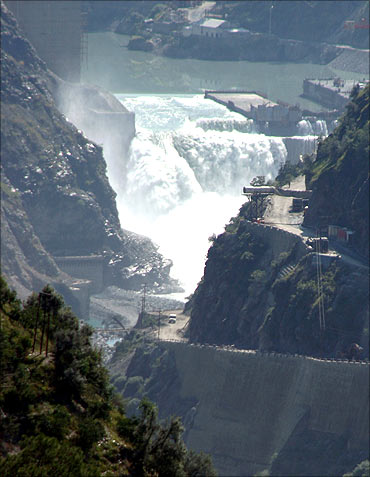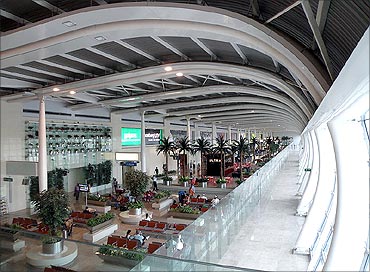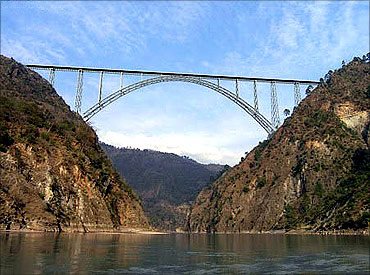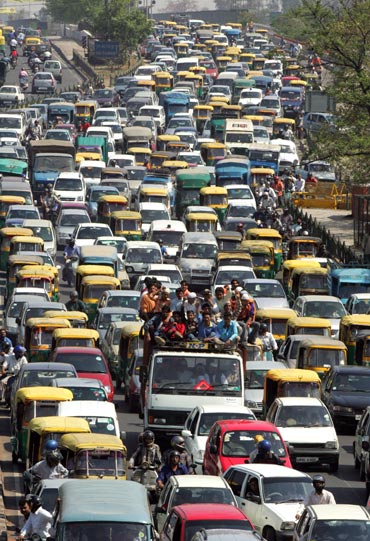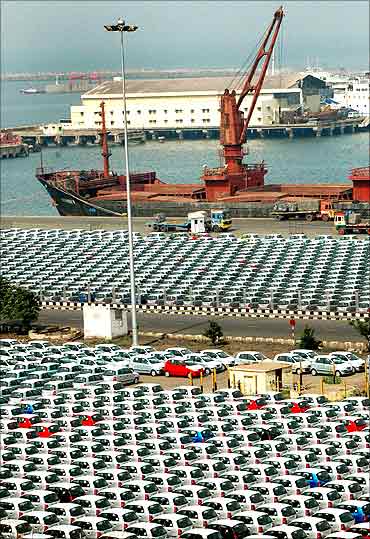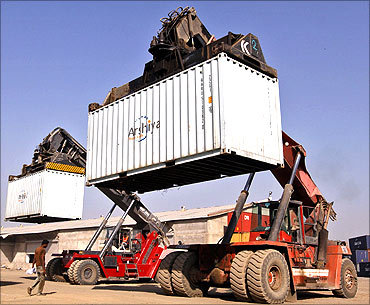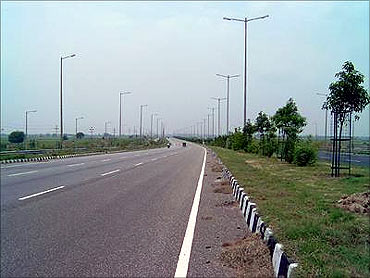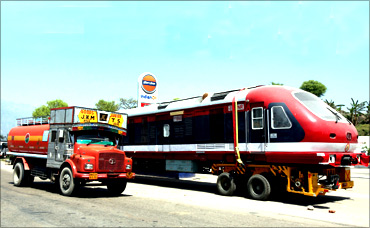 | « Back to article | Print this article |
The skewed story of India's infrastructure boom
Indian stock market systems - trading platforms, settlement systems, regulations - are among the best in the world today.
The government has also been continuously giving various incentives - 80cc, incentives for ELSS and very low tax rates for capital gains on stocks. Yet in the last five years, primary and secondary issuances of equity have accounted for less than two per cent a year of gross capital formation. Is it worth the effort if its performance even after 30-40 years is so abysmal? Or have we built systems and infrastructure far ahead of time?Click NEXT to read more...
The skewed story of India's infrastructure boom
The usual arguments for infrastructure are (i) India is woefully short of infrastructure, (ii) infrastructure investments will create "externalities" and (iii) due to these government needs to support them with viability gap funding, investment incentives, tax exemptions and so on.
This, it is argued, is required for reaching double-digit growth rates. Let us examine the merits.Any under-developed country will surely be short on many things - literacy, medical services, hotels, schools, and even soft infrastructures like attitudes and discipline, food, sanitation, etc.
Click NEXT to read more...The skewed story of India's infrastructure boom
Economic infrastructure (like ports, airports, cold chains and so on) for which concessions are being sought is also one of them.
Economic returns and not success in wresting concessions should govern the relative share of investments in each economic activity: the rule may be different for social actions.
Concessions are sought since the economic returns are far too low. These are sought for long periods - 15-20 years and viability gap funding up to 40 per cent (current limit for BOT), both of which suggest an economic return of seven to right per cent.
Click NEXT to read more...
The skewed story of India's infrastructure boom
Given India' real growth rates of eight to nine per cent and inflation of five to six per cent, the minimum nominal returns required for sustained existence of any venture should be a minimum of 14-15 per cent, with a normal payback period of five to eight years.
First, some crucial questions. Why should we fund projects at seven to eight per cent when there are several projects waiting at 15-16 per cent?
In rural areas there are people willing to borrow at 60-80 per cent - which should imply that they hope (sometimes may be foolishly) to get equivalent returns. Click NEXT to read more...The skewed story of India's infrastructure boom
Second, infra projects are enormous cash guzzlers and the more we fund such low-return projects, it might unwittingly pull down the overall growth rates in the near to medium term.
Next, let's look at the "externalities". It is true that any infrastructure project will facilitate growth in other sectors.
However, if the project is creating positive externality in economic infrastructure like power, ports, airports, railways and roads - all sectors aimed at serving industrial or business activity or production of goods or services consumed largely by top income quartile, why should we not recover the same from them?
The skewed story of India's infrastructure boom
If the beneficiaries are not forthcoming to pay up for benefits enjoyed by them, how do we know that we are indeed creating positive externalities?
Third, infrastructure investments are claimed to be not easily scalable and hence the investments have to be made keeping in mind demand for next several years.
Concessions are justified for the "initially wasting and later productive" investments. Such "visionary" investments should be governed by the growth rates of the country under reference.
Click NEXT to read more...
The skewed story of India's infrastructure boom
For our nominal growth rates of 14-15 per cent, a benefit of Rs 100 accruing after 15 years is worth Rs 15 in present value. However, for an advanced economy growing at real rates of two per cent and inflation of two per cent, the same is worth Rs 55 today.
It makes sense for them to pursue infrastructure with such long-term benefits and payback.
But our problems are more immediate in nature, like basic health care, primary education and persisting hunger.
For us to keep investing scarce resources in pursuing seven to eight per cent, 15-30 year payback infrastructure projects seems cruel.
Click NEXT to read more...
The skewed story of India's infrastructure boom
We need to make infrastructure investments a sustainable proposition.
It just does not pay to create monsters today, short-recover costs and when the time is ripe for modernisation or expansion stare at decaying services, bankrupt ventures and listen to further cries for concessions.
The Golden Quadrilateral was supposed to save nearly 30 per cent of costs for the commercial operators in increased billing per day (due to faster movement), reduced fuel and maintenance costs.
Click NEXT to read more...
The skewed story of India's infrastructure boom
Road transport accounts for 4.5 per cent of GDP (both passenger and freight included), roughly 40 per cent of which is on national highways. The savings accruing to commercial operators on these roads should be Rs 32K cr.
If the savings were shared 50:50, the government could have recovered Rs 16K cr and doubled the pace of NHDP (budget Rs 9,100 cr in 2009-10) and made it more self-sustaining.Concessions for economic infrastructure aimed at the top income quartile are bereft of merit.
Click NEXT to read more...
The skewed story of India's infrastructure boom
Within the overall basket, there are several infra projects potentially capable of earning economically-sustainable ROIs of 15 per cent or more.
We should start with those, recover full costs including interest and expand them by re-investing and grow with the economy. Other low-return projects can be pursued if specific low-cost funds are available through FDI. Click NEXT to read more...The skewed story of India's infrastructure boom
We are poor at demand management: if we recover full economic prices without subsidies for our airports and trains, the demand may stand perhaps halved and we won't see as much congestions as we do today.
It is our compelling national habit to demand Kingfisher First service levels in everything at Spicejet prices; but the government must concentrate on building self-sustaining systems.
Without this there will be a perpetual shortage of infrastructure in India. Concession should at best be limited to social infrastructure.
The author is CFO of a large paper company. These views are personal.

